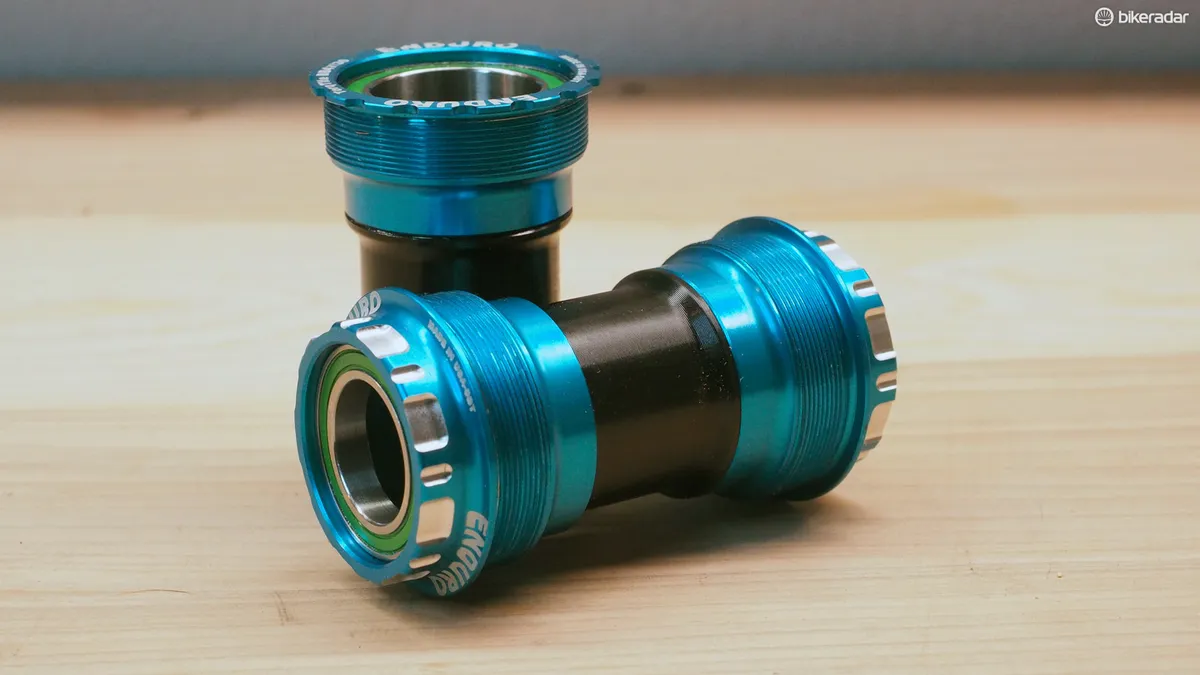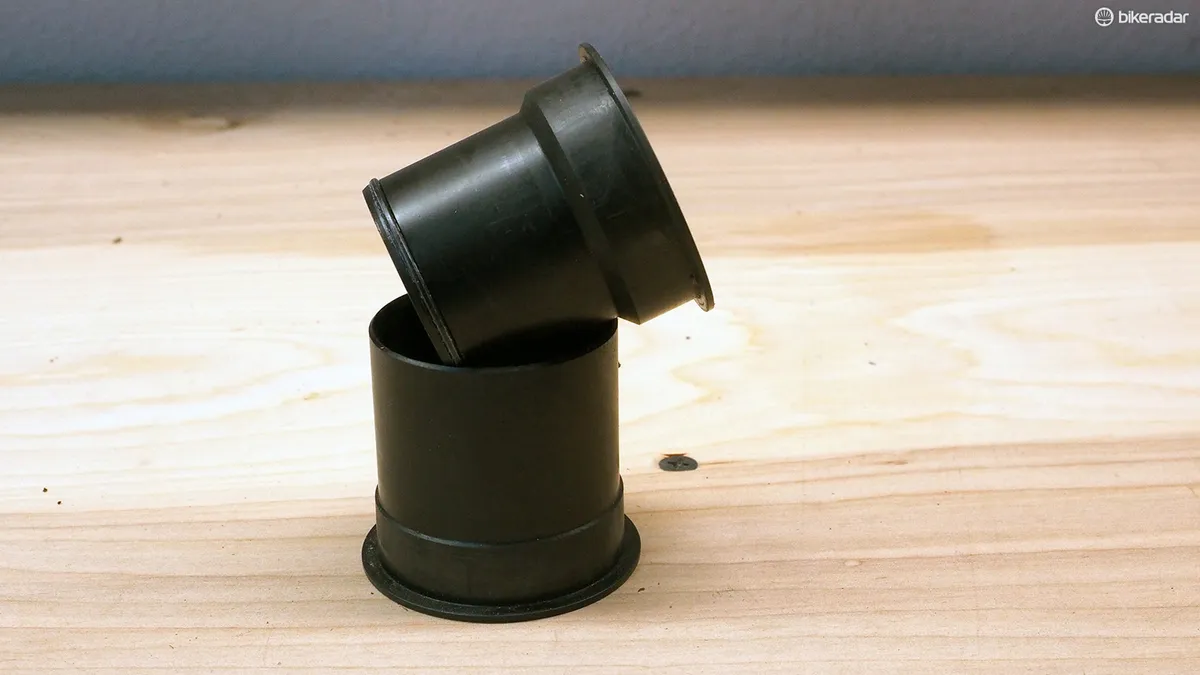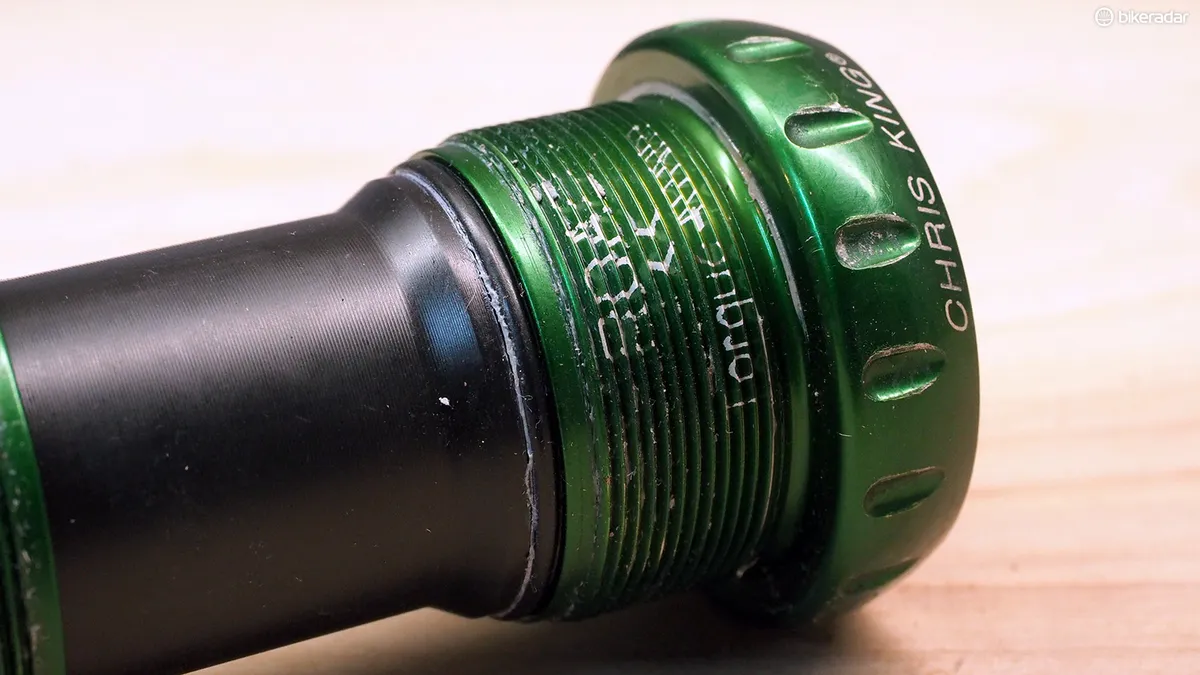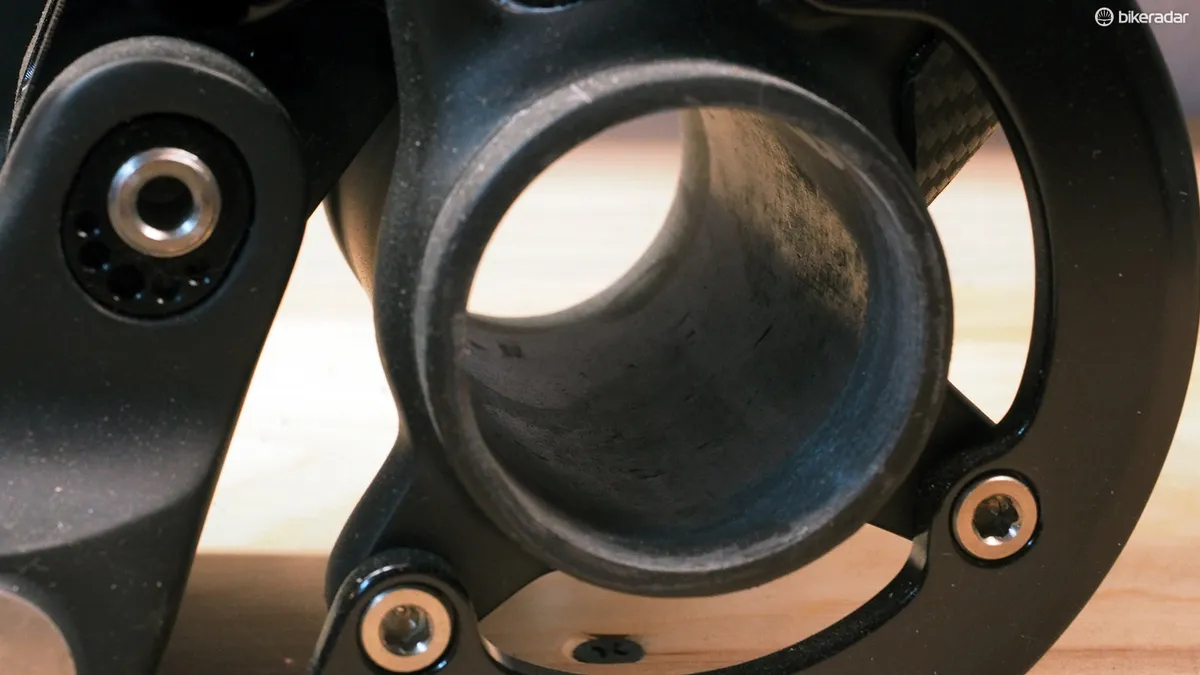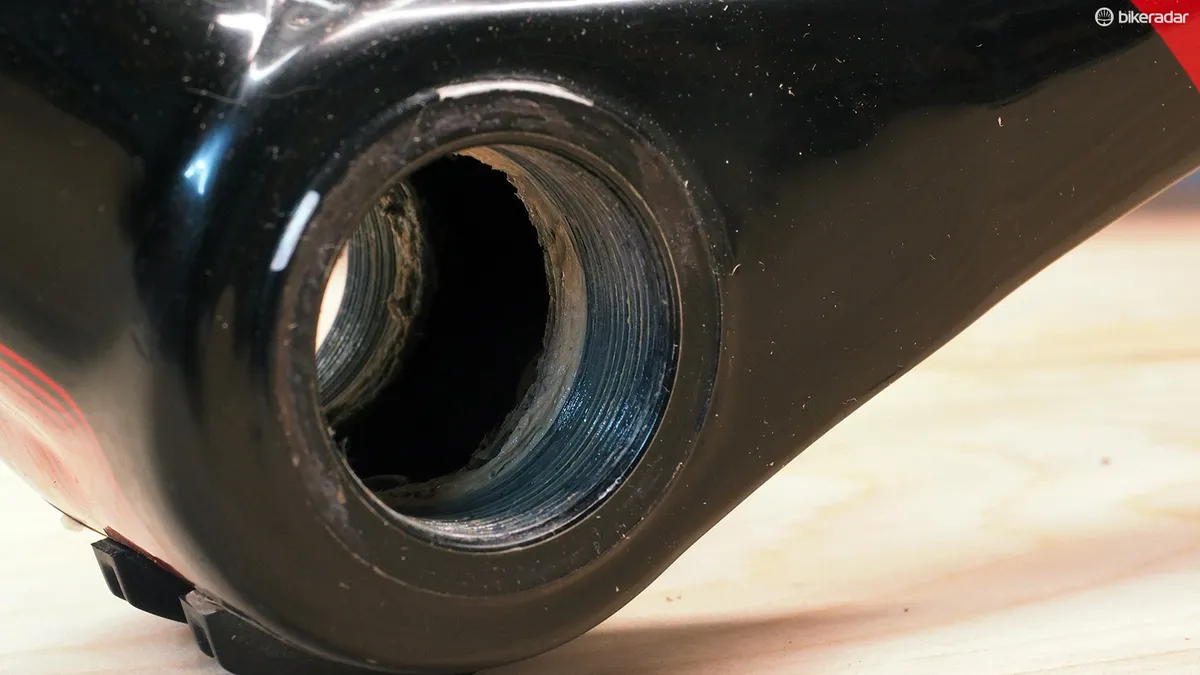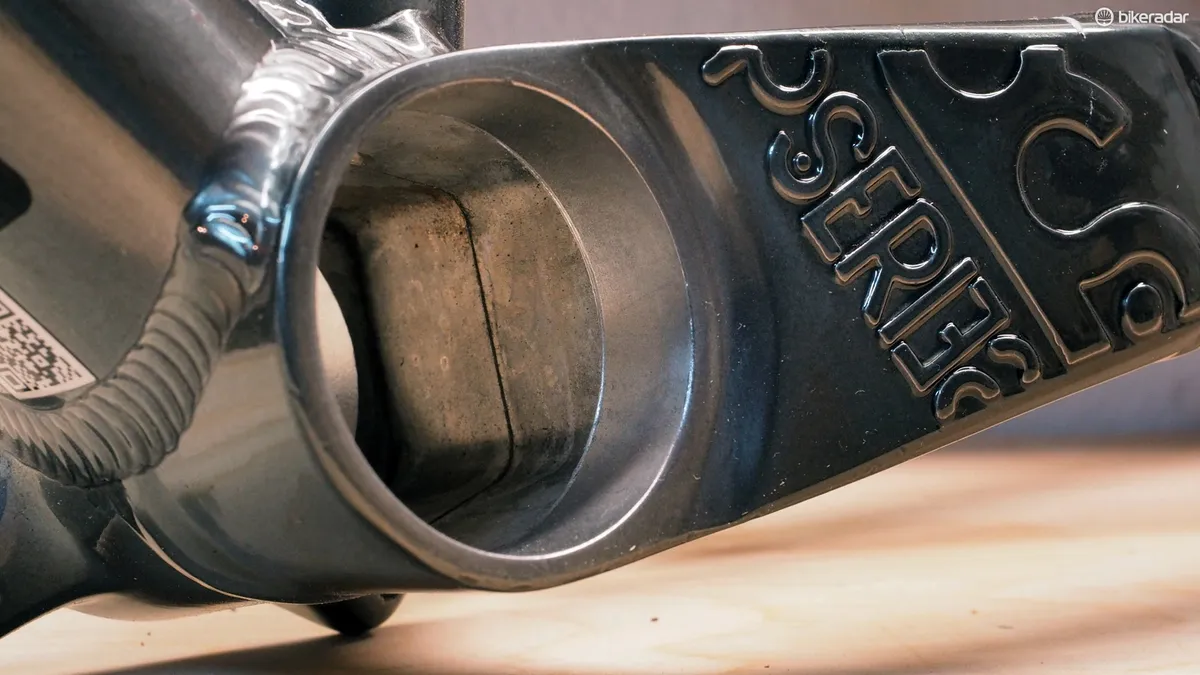Much has been written about the new T47 threaded bottom bracket ‘standard’ in recent weeks and a lot of people are rightfully excited about it. In one fell swoop, T47 – at least in theory – provides the ease of service and quiet creak-free running of traditional English threaded shells but with the oversized dimensions and enormous drivetrain compatibility that frame designers desire.
So T47 sounds like the solution we’ve all been waiting for, doesn’t it? Yay! Crack open the champagne! Start singing Kum Ba Yah!
Sorry to be the killjoy, but I wouldn’t go celebrating just yet.
Technical pros and cons aside, I’m highly skeptical that T47 will expand into the mainstream where the most people stand to benefit. Here’s why.

The new T47 threaded bottom bracket design (at left) holds enormous promise over press-fit systems but its widespread acceptance is anything but certain
Why press-fit came about in the first place
Cannondale didn’t invent the idea of a press-fit bottom bracket but it certainly popularized it with the introduction of BB30 in 2000. By pressing cartridge bearings directly into an oversized shell (and including an oversized aluminum bottom bracket spindle with it), Cannondale was able to reduce overall weight while also increasing system stiffness and reducing the number of required parts – basically a win all around by any engineer’s measure.
Cannondale opened the BB30 design specs to everyone in hopes of more widespread industry adoption – and a few did take advantage of that. BB30 requires exceptionally tight tolerances to work well, however, and other companies that were interested in the concept’s benefits (but not its high manufacturing cost and complexity) quickly went to work developing competing systems that followed a similar philosophy.

Die, cheap plastic press-fit cups, die!
Engineers realized that you could loosen the frame tolerances by housing the bearings in a separate semi-squishy cup and then pressing that subassembly into a smooth-bored bottom bracket shell. In the end, what you got was essentially the same result – at least on paper – while also making the frames easier and cheaper to build.
Scott unveiled Shimano’s new PF86 system in 2006 (which was quickly adapted to PF92 for mountain bikes), Trek launched its BB90/95 concept in 2008 on a new-generation Madone, SRAM introduced PF30 in 2010, and FSA followed with BB386EVO in 2011. As if that weren’t enough already, there’s also BBright (a niche standard used almost exclusively by Cervélo), BB30a, and the innumerable flood of variations for plus bikes and fat bikes.
What’s the one trait that unites all of these designs? For one reason or another, each is essentially touted as being better than the others. All of those systems may very well have their own set of advantages but as we know too well now, each also has its own unique set of flaws.
No, apparently we can’t all get along
The proliferation of multiple bottom bracket ‘standards’ is unquestionably one of the biggest headaches for riders, shops, distributors, and anyone else downstream who has had to deal with them at one point or another. But as with any illness, these are only symptoms of the core issue: in this case, the lack of cooperation within the industry for the sake of the buying public and the never-ending need to one-up the competition, at whatever cost. Despite plenty of public outcry against press-fit bottom brackets for years, few companies have openly admitted that there’s a problem.
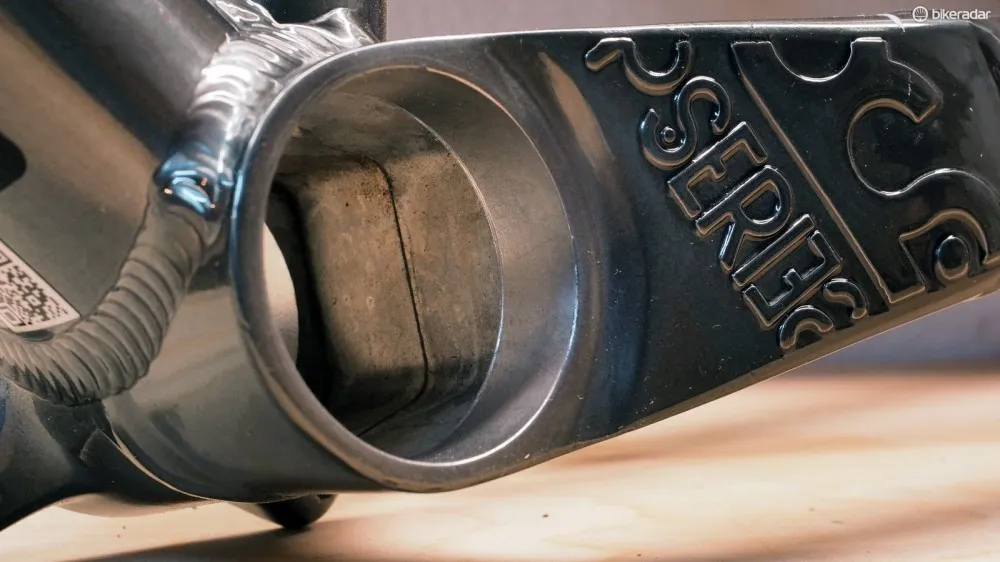
Creaky press-fit bottom brackets have been a major sore spot over the past few years but few bike companies will openly admit that they often suck
Enter T47.
On paper, it’s the ultimate solution, promising an enormous range of frame design flexibility, outstanding crankset compability, and the ease of service and (generally) creak-free running of threads. But getting the bike industry to adopt it en masse will be anything but straightforward.
The practical requirements of adapting current frame designs to use T47 are daunting to say the least – perhaps not in terms of engineering changes but in logistics for sure. Swapping over one model is one thing but any company that has predominantly hitched itself to one particular system would be taking on a Herculean task.
“While the T47 ‘standard’ might have its benefits (on paper), in reality, on a mass production scale, it’s highly unlikely that we would ever consider incorporating it into our future designs,” says Giant’s global marketing manager, Andrew Juskaitis. “With over 25 road bike series in our 2017 line (most with six sizes) you can imagine the amount of engineering work it would take to redesign each and every individual frame to accommodate T47.
“While incorporation of a new bottom bracket standard is possible,” Juskaitis continues, “it would take upwards of six years to fully change over (an average model life cycle is four to five years). So, from Giant’s standpoint, you most likely won’t see us changing over to T47 in the foreseeable future. Any potential benefits don’t outweigh the costs.”

Many companies have touted various versions of press-fit bottom bracket systems for years
Companies that have long touted press-fit systems as desirable features would face an even bigger hurdle by switching to T47: the tacit admission that the designs they’d previously claimed as superior are no longer so. Incorporating T47 into a frame that currently uses a press-fit design could instantly add well over 100g to many frame-plus-bottom bracket weights. That’s a huge figure when it comes to high-end road sales, and a gain that would be hard to brush off in light of the enormous energy spent to take that weight off in the first place.
Of all the press-fit systems currently on the market, PF30 seems most problematic given the narrow bearing spacing (which are more prone to off-axis loading), the large-diameter bearings (which are individually flexier than smaller cartridges), and the stiff 30mm-diameter crank spindles. Of all the PF30 adherents, none would have more crow to choke down than Specialized – although it sounds like there’s some willingness to at least consider the change.
“We always looking to provide the rider with a better ride experience,” says Specialized bike developer Eric Schuda. “We need to test it to verify how well it works, then look into the cost it would push to the rider, serviceability, and manufacturing. If it’s good, we’ll go for it but if it raises the cost and creates longer lead times it might not ultimately be the end-all solution. That said, I think everyone here is excited to see it.”

Press-fit bottom brackets can and do work very well but they require precise manufacturing processes to make that happen
Trek is more ambivalent about T47’s prospects.
“Trek’s stance on this is pretty simple,” says road product manager Ben Coates. “We look at it from the rider’s perspective. What will give the rider the best performing system? On the surface, it looks like T47 would make for a much better BB30 or 386EVO option, especially for the manufacturers that are still pressing in an alloy sleeve. That said, threads in a carbon frame come with a huge amount of compromise from a design and manufacturing point of view: redundant material, post-molding bonding and machining, etc.
“Bottom line, there is nothing off the table,” Coates added. “Evaluating T47 would take us a while because in order to do it properly, we would have to cut tools, mold up samples, and evaluate the complete package. Any change from our current offering would be driven by clear proof of superiority for the rider.”
Even smaller builders have mixed opinions on T47. While some are fully on board, such as Drew Guldalian of Engin Cycles and Ben Farver of Argonaut Cycles, others aren’t quite so keen.
“Introducing metal back into our frames is possible but not high on our list of priorities,” says Tom Rodi of Parlee Cycles. “This looks (for now at least) like a solution that helps metal builders more than composite builders. BB30/PF30 has been hard(er) for those guys because of all the distortion from welding/brazing at the bottom bracket area, where we do not have that issue at all with molded parts.
"We've been able to hold our PF30 bore tolerances well over the years so PF30 has not really be problematic for us. Holding tolerances on threaded parts is as difficult as holding tolerances on press-fit," Rodi went on. "The bottom line is, we're watching it develop but have no plans to produce bikes with it yet.”
Late to the party
Industry viewpoints aside, there’s also the issue of T47’s unfortunate timing.
Had this been launched even a couple of years ago, industry folks might be embracing it with more wide-open arms. However, the advent of press-fit bottom brackets with cups that thread to each other – such as from Enduro, Praxis, Wheels Manufacturing, and others – has resolved the issue so well that one might even say the problem has already been fixed (although you could most certainly make the argument that such units should be included as stock equipment).
Proponents of T47 are quick to point out that owners of problematic metal frames equipped with PF30 shells can be immediately retrofitted. By design, T47 threads can be cut directly into a PF30 shell with no additional changes – although actually doing so is easier said than done. And as any veteran shop mechanic will attest, there’s also no guarantee of success even if you do everything right.

Got a noisy press-fit frame? One of the newer thread-together bottom brackets will very likely solve your problem for good
“I do not see taking a current PF30 bike and then machining new threads being a smashing success,” says bike mechanic guru Calvin Jones of Park Tool. “It will take some very expensive tapping systems, not simply new taps used on old handles. Threads in an English bottom bracket shell sold as a tube are cut by a lathe. So for nice threads, you should be using two taps with this conversion: one to make a rough cut and a second follow-up for the final cut to full pitch diameter. One tap that is staged in two diameters might do the job, but piloting these into a smooth shell straight will be tricky.
“The circumference of the English cups is about 110mm, but these will be about 145mm, meaning a lot more surface contact and hence the force required is higher,” Jones continues. “Tapping is not a simple process. There will be some cases where everything is done by the book and the threads are trash. Your initial PF30 shells (like all shells) vary in hardness, bore sizing, amount of warp, plus issues in materials.”

Sure, you could theoretically tap threads into this PF30 shell – but you've only got one shot to get it right
Guldalian says he’ll be equipped to retrofit PF30 titanium frames to T47 – but that it won’t be cheap.
“In my estimation, I will need to charge $500 to retrofit a titanium frame from PF30 to T47," he says. "It’s still a viable option if someone really want to give new life to a titanium bicycle frame.”
Light at the end of the tunnel?
With two model years worth of bikes already in process, mainstream bike companies are understandably coy about their intentions on T47 – and even if anyone does plan to switch, it’s likely going to find its way into alloy frames well before carbon ones. Behind the scenes, Chris King product manager Jay Sycip says that he’s been inundated with interest from both big and small brands who are eager to see the precise design specifications and evaluate the concept’s merits.
“The first initial drive for this is just to replace the PF30 stuff; that’s where people are having the most issues," he says. "I don’t know 100 percent where this is going, but I feel like in the next calendar year, it’ll be small builders first, and then maybe in the following year, some midsized companies could adapt. I really don’t think the super high-end carbon product out there will actually have this standard any time soon. They’re always going to drive for weight.”
So to make a long story short, it’s… complicated.
T47 certainly has an awful lot going for it and at least from a technical aspect, there are few valid arguments against it. If nothing else, it’s a potential godsend for end users who have have grown increasingly weary of problematic press-fit systems.
For it to be adopted widely, however, is going to require a lot of industry cooperation and more than a few egos being set aside for the greater good.
I’ve been one of the most vocal critics of press-fit bottom brackets and want T47 to succeed so, so badly – but frankly, I just don’t see happening, at least not on as wide a scale as it should.
